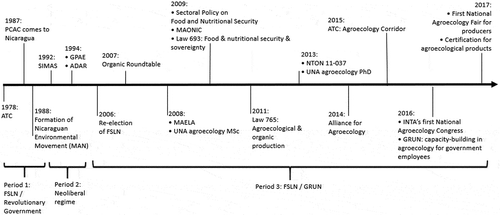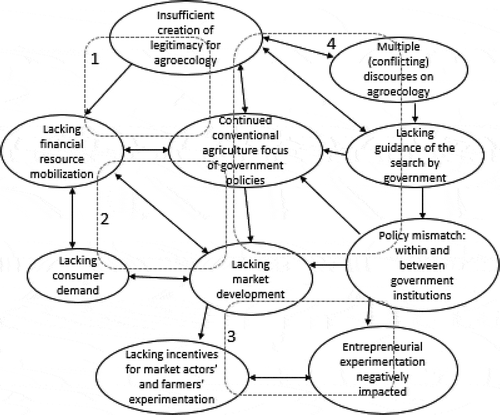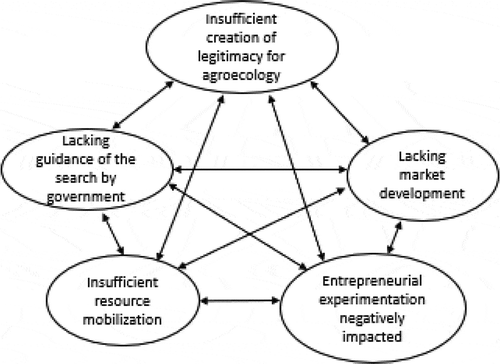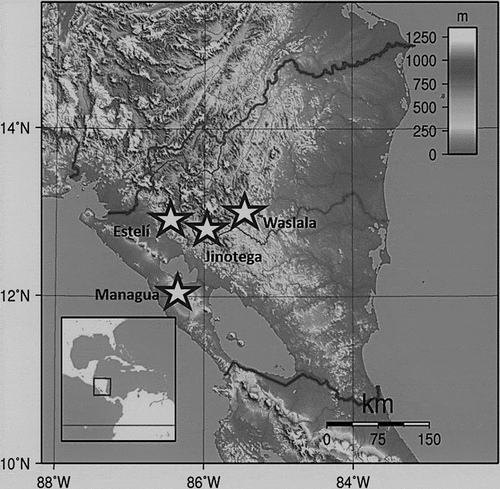Figures & data
Table 1. Structures of technological innovation systems (based on Wieczorek and Hekkert Citation2012).
Table 2. Functions and diagnostic questions for systemic analysis (Bergek, Jacobsson, and Sandén Citation2008; Hekkert et al. Citation2007; Wieczorek and Hekkert Citation2012; Wieczorek et al. Citation2013).
Table 3. Systemic problems leading to blocking mechanisms (based on Wieczorek and Hekkert Citation2012).
Table 4. Summary of data collection.
Figure 2. Timeline of the three periods of the agroecological innovation system in Nicaragua, with main events of each period.

Table 5. Summary of main positive and negative aspects of each function.
Table 6. Legislation on agroecology and related topics since 2007.
Table 7. Systemic problems hampering the further growth of the agroecological innovation system in Nicaragua.
Figure 3. The lack of a common vision for agroecology as a central blocking mechanism impacting all other system aspects (vicious cycles 1–4 identified by dotted lines; arrows indicate one-way or two-way relationships between issues).

Figure 4. Hard and soft institutional problems weakening market entrepreneurs’ willingness to experiment (arrows indicate one-way or two-way relationships between issues).

Figure 5. Hard and soft institutional problems negatively impact farmers‘ willingness to experiment with agroecology (arrows indicate relationships between issues).

Figure 6. Insufficient creation of legitimacy causes vicious cycles throughout the agroecological innovation system (cycles 1–4 identified by dotted lines; arrows indicate one-way or two-way relationships between issues).

Figure 7. Vicious cycles between central functions that hinder the further diffusion of agroecology (arrows indicate interrelationships between issues).


